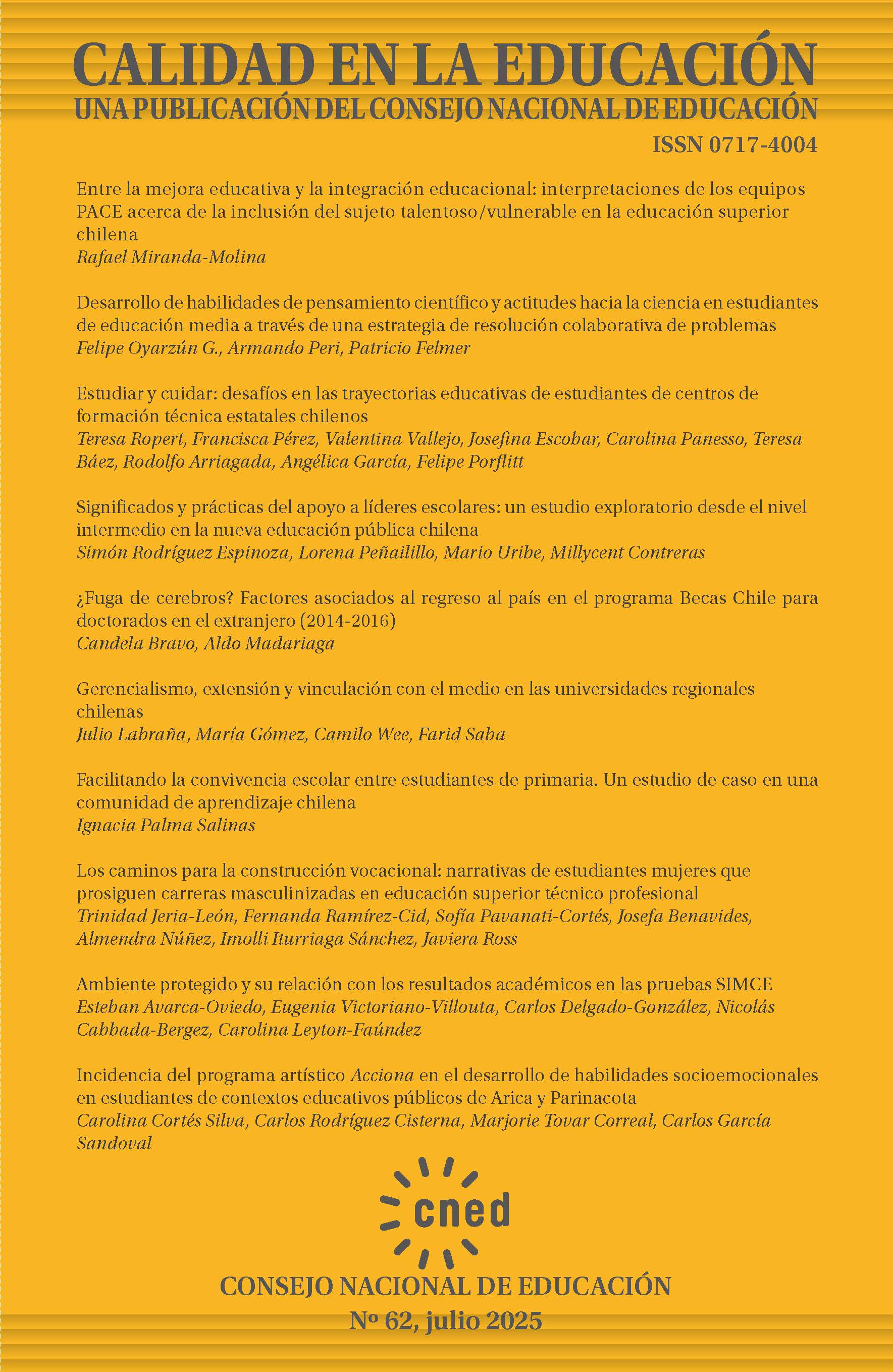Protected Environment and its Relationship with Academic Performance in SIMCE Tests
DOI:
https://doi.org/10.31619/caledu.n62.1595Keywords:
Academic Achievement, School Violence, School Coexistence, SIMCEAbstract
This study analyzes the psychometric properties and relevance of the Protected Environment Index developed by the Quality of Education Agency, as measured through the 2023 Quality and Context of Education questionnaires applied to 4th-grade primary and 10th-grade secondary students (2nd grade of secondary school) as part of the assessment in the National System for Measuring the Quality of Education (SIMCE). The distribution of the index is examined, comparing differences by gender, socioeconomic group, and rurality, as well as its association with academic performance in reading and mathematics through hierarchical regression models. The results confirm the validity of the index, showing adequate internal consistency and good model fit in the confirmatory factor analysis. A positive and statistically significant association is observed between this indicator and performance on the SIMCE tests, with a more pronounced effect in 4th grade. Interaction analyses show that these associations vary by socioeconomic group and grade level. Specifically, in 4th grade, a protected environment is associated with a greater increase in SIMCE scores for students from the medium-low socioeconomic status group compared to other groups. The gender variable shows a statistically significant but small interaction, while rurality shows no significant interaction. These findings highlight the importance of strengthening school coexistence and addressing violence among students as key factors for improving educational quality and students' academic performance.
Downloads
Published
Issue
Section
License

This work is licensed under a Creative Commons Attribution 4.0 International License.
Authors retain their Copyright and only transfer a part of these to the journal, accepting the following conditions:
Authors keep their rights as authors and guarantee the right to the journal for the first publication of their work, which is simultaneously subject to the Creative Commons Attribution license allowing third parties to share the study accrediting the author and first publication in this journal.
Authors may adopt other non-exclusive license agreements for distribution of the version of the published work (e.g. inclusion in an institutional thematic file or publication in a monographic volume) accrediting initial publication in this journal.
Authors are allowed and recommended to share their work over the Internet (e.g. in institutional telematic files or their website) before and during the submission process, which may lead to interesting exchanges and increased citation of the published work. (See The effect of open access).

